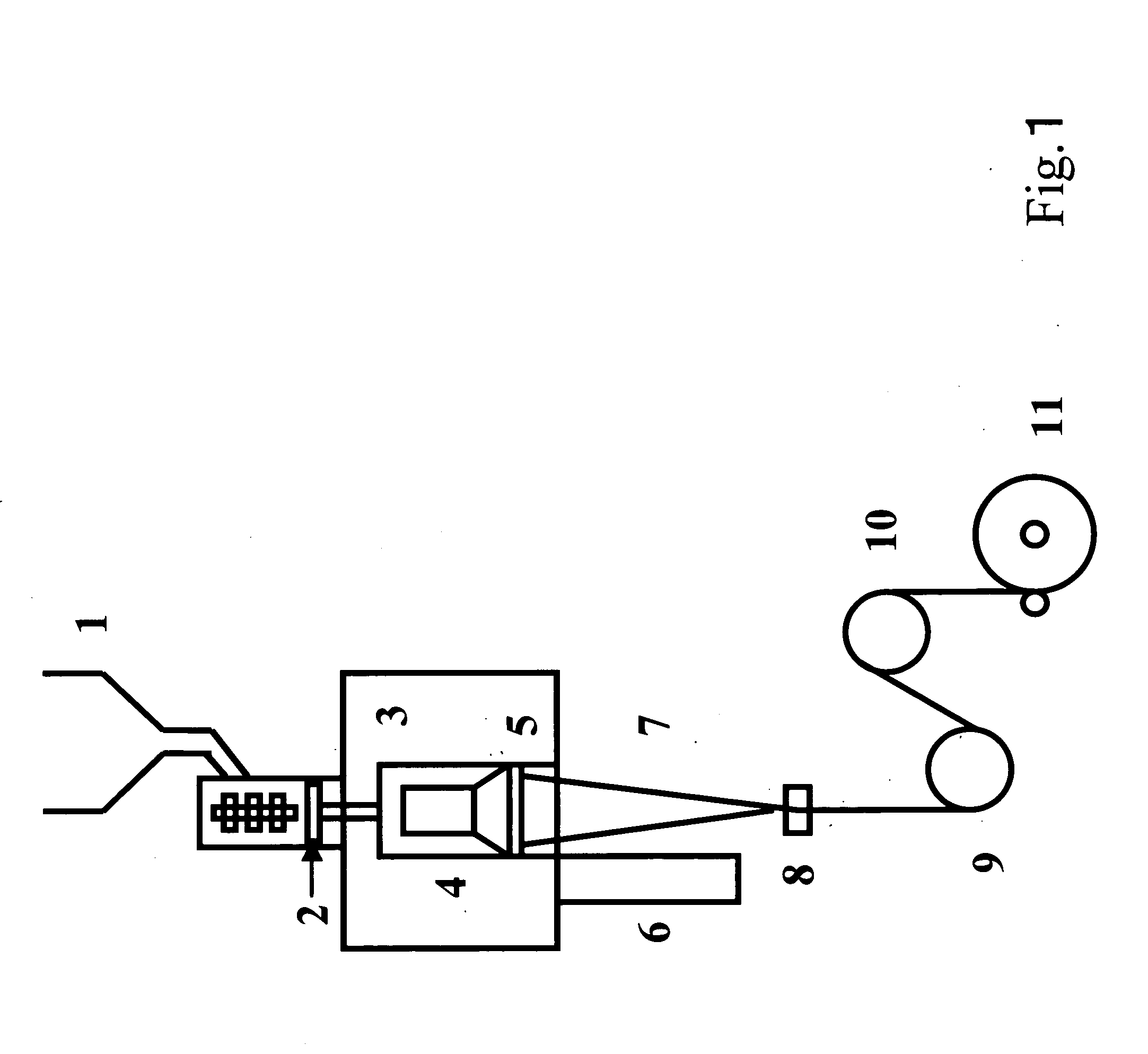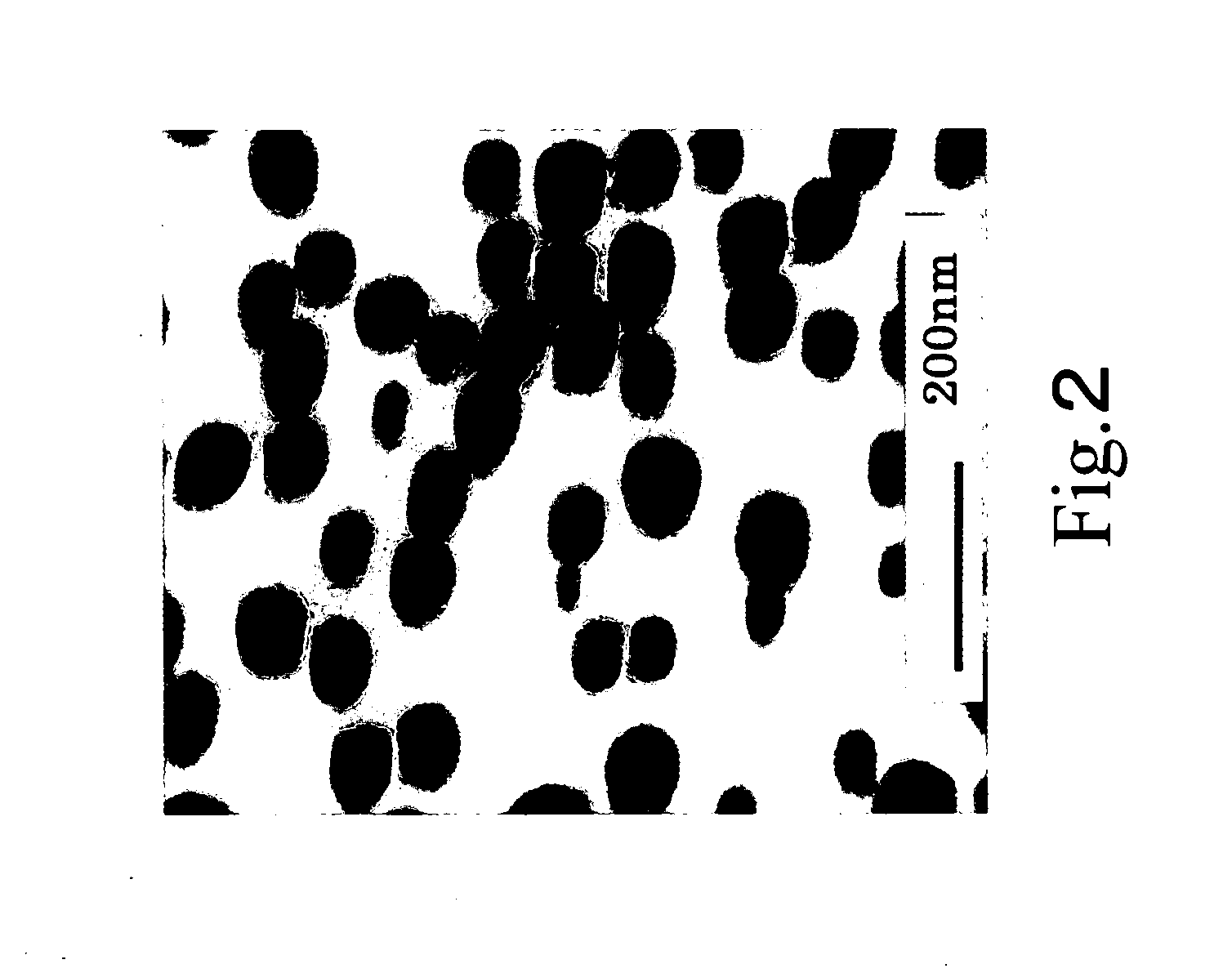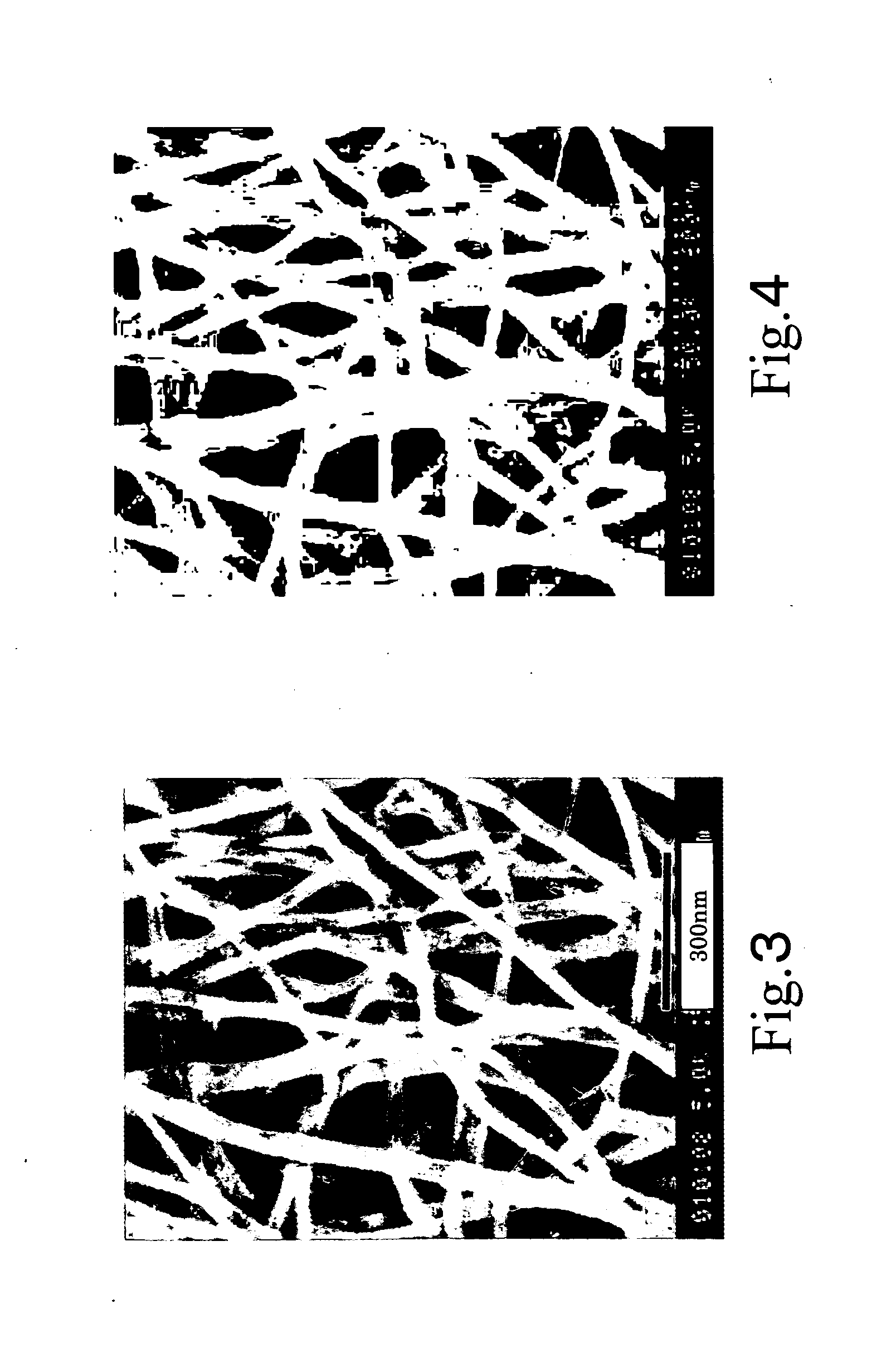Nano-Fiber Compound Solutions, Emulsions And Gels, Production Method Thereof, Nano-Fiber Synthetic Papers, And Production Method Thereof
- Summary
- Abstract
- Description
- Claims
- Application Information
AI Technical Summary
Benefits of technology
Problems solved by technology
Method used
Image
Examples
example 1
[0258] Production of “Polymer Alloy Fibers”, Beating of Nanofibers by a Commercially Available Beater, and Production of a Nanofiber Compound Gel
[0259] Twenty weight percent of N6 with a melt viscosity of 53 Pa·s (262° C., shear rate 121.6 sec−1) and with a melting point of 220° C., and 80 wt % of a copolymerized PET with a melting point of 225° C. and with a melt viscosity of 310 Pas (262° C., shear rate 121.6 sec−1) obtained by copolymerizing 8 mol % of isophthalic acid and 4 mol % of bisphenol A were kneaded using a two-screw extrusion kneader at 260° C., to obtain polymer alloy chips with a b* value of 4. The copolymerized PET had a melt viscosity of 180 Pa·s at 262° C. and 1216 sec−1. The kneading conditions in this case were as follows. As the polymers, N6 and the copolymerized PET were separately weighed and separately supplied to the kneader. The screws used had a diameter of 37 mm, effective length of 1670 mm and L / D of 45.1. The kneading temperature was 260° C.
[0260] The...
examples 2 and 3
[0263] Nanofiber compound solutions obtained by beating a nanofiber aggregate for a long period of time using a laboratory blender
[0264] Seven point zero grams (weight as dry fibers; water content 110%) of the short nanofiber aggregate with a fiber length of 2 mm obtained by removing the sea component from the “polymer alloy fibers” of Example 1 and water were added into a laboratory blender up to 500 cc. The mixture was (1) dispersed at 6000 rpm for 30 minutes by the laboratory blender and (2) filtered by a 50-mesh stainless steel screen, to obtain a solution. The nanofibers on the stainless steel screen were returned into water, and furthermore, the operations of (1) and (2) were repeated three times. As a result, about 1.0 wt % nanofiber compound solution was obtained. Ten grams of the compound solution was placed in a vat, and the water was evaporated in a dryer. The fiber concentration was measured and found to be 1.1 wt %. Moreover, water was added to prepare 1.0 wt % nanofib...
examples 4 , 5 and 6
Examples 4, 5 and 6
[0270] Production of Low Concentration Nanofiber Compound Solutions from the High Concentration Nanofiber Gel of Example 1
[0271] One hundred and fifty grams of the second-step-beaten 10 wt % nanofibers obtained in Example 1 were taken, and 850 g of water was added to them. The mixture was (1) dispersed at 6000 rpm for 5 minutes by a laboratory blender and (2) filtered by a 50-mesh stainless steel screen, to obtain a solution. (3) The nanofibers on the stainless steel screen were returned into water, and the operations of (1) and (2) were further repeated five times. As a result, about 1 wt % nanofiber compound solution was obtained. Ten grams of the solution was placed in a vat, and the water was evaporated in a dryer. The fiber concentration was measured and found to be 1.1 wt %. Water was further added to prepare 1.00 wt % nanofiber compound solution (Example 4). One hundred and fifty grams of the 1.00 wt % nanofiber compound solution was taken, and 850 g of wa...
PUM
| Property | Measurement | Unit |
|---|---|---|
| Fraction | aaaaa | aaaaa |
| Fraction | aaaaa | aaaaa |
| Time | aaaaa | aaaaa |
Abstract
Description
Claims
Application Information
 Login to View More
Login to View More - R&D
- Intellectual Property
- Life Sciences
- Materials
- Tech Scout
- Unparalleled Data Quality
- Higher Quality Content
- 60% Fewer Hallucinations
Browse by: Latest US Patents, China's latest patents, Technical Efficacy Thesaurus, Application Domain, Technology Topic, Popular Technical Reports.
© 2025 PatSnap. All rights reserved.Legal|Privacy policy|Modern Slavery Act Transparency Statement|Sitemap|About US| Contact US: help@patsnap.com



